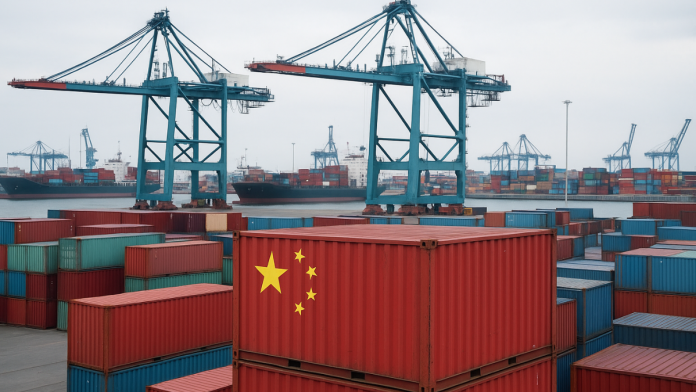China’s exports saw a sudden and unexpected fall in October, marking the weakest performance since February. This decline has drawn attention across global markets as trade pressures persist.
Data from customs showed that outbound shipments dropped by 1.1% in October, reversing from a strong 8.3% rise in September. Analysts had expected a 3% increase, making the fall more surprising. One reason behind the weak number was the high base of comparison from last October, when exports had surged as companies rushed to ship goods early in anticipation of higher trade taxes.
Imports into China also slowed. They rose 1% in October, much lower than September’s 7.4% growth, and below the 3.2% increase economists had predicted.
Early indicators highlighted a slowdown in business activity. The official manufacturing index fell to a six-month low, showing a decline in new overseas orders. Producers reported that many foreign buyers had reduced purchases as they had stocked up in previous months.
Trade Strains Impact Shipments
The decline in exports came during a month marked by rising trade tensions. At the beginning of October, the United States signalled steep tariff increases on Chinese goods in response to China tightening its export restrictions on rare earth metals, which are important for electronics and technology manufacturing. This unsettled global buyers and added uncertainty to trade flows.
Towards the end of the month, both countries signalled reduced tensions after agreeing to extend their trade truce—previously set to end on November 10—by one year. The temporary easing did not change the tariff situation, with Chinese goods entering the US still facing an average tax of around 45%. Economists say that tariff levels above 35% significantly reduce or even eliminate profit margins for many manufacturers.
The reduced access to the US market has weighed on China’s trade growth. Experts estimate that the loss has lowered export growth by around 2 percentage points, affecting the overall economy by about 0.3% of GDP.
U.S. to enforce 100% tariffs on Chinese imports after Beijing’s rare earth measures
Efforts to Offset Market Losses
With trade challenges in major markets, China has been widening its export reach. Exporters have attempted to grow sales in other regions to balance the drop in shipments to the US. Businesses say that while this helps maintain volumes, sales to new markets often come with lower earnings because of thinner margins. Companies are adjusting pricing, product mixes, and shipping strategies to stay competitive in these regions, even if it requires reducing profits to secure orders.
Additionally, China’s rising trade surplus with several countries has faced pushback. There are concerns in some markets that large quantities of lower-priced Chinese products may affect local industries and disrupt domestic competition. This has resulted in new measures by some countries to protect their domestic markets, including stricter import rules and monitoring of product inflows. Such steps have added to the hurdles facing Chinese exporters, who now have to navigate changing market policies while trying to sustain their overseas business.
U.S. moves to blacklist ships accused of smuggling banned North Korean coal to China
Steps to Support Trade Stability
In response to ongoing trade pressures, China announced steps to increase imports to make the country a more attractive buying destination. The plan aims to ease trade imbalances and encourage broader international cooperation.
Authorities shared confidence in the country’s long-term economic growth. At a major import expo held in Shanghai, officials stated that the economy is expected to reach 170 trillion yuan by 2030, compared with an estimated 140 trillion yuan by 2025.
However, low local spending remains a barrier to growth. Officials recently stated that the share of household consumption in the economy would be raised “significantly” over the next five years. This plan followed a key meeting that set economic and policy goals for 2026 to 2030.
China’s trade surplus in October reached US$90.07 billion, slightly lower than US$90.45 billion in September, and below the US$95.6 billion that analysts expected. The combination of weaker-than-expected exports, slower imports, and continued trade pressures reflects a challenging period for China’s trade sector.




